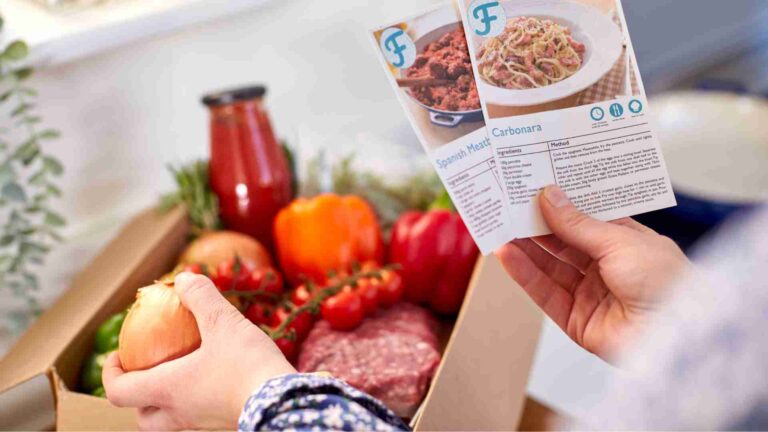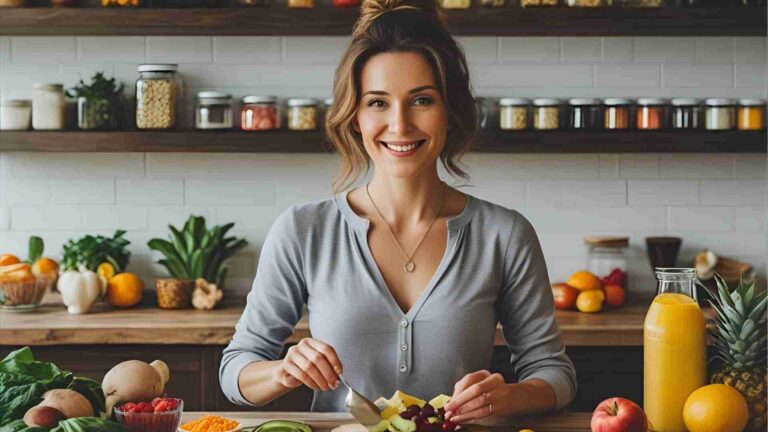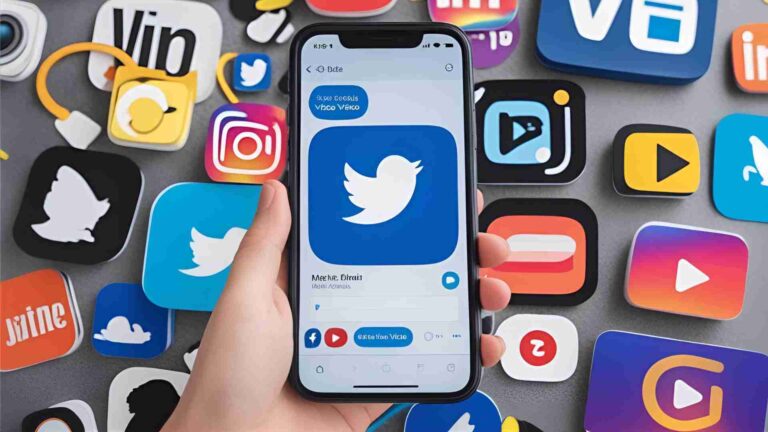The Ultimate Food Photography Pricing Guide
Food photography is an art form that combines technical expertise, creative vision, and strategic business planning. The images you create don’t just showcase dishes—they drive customer engagement, elevate brand identity, and boost sales for restaurants, brands, and publishers. Pricing your services correctly is the cornerstone of transforming your passion into a sustainable, profitable career.
This comprehensive guide dives deep into every facet of food photography pricing, offering actionable strategies to identify ideal clients, set earnings goals, structure fees, manage expenses, leverage licensing, and avoid common pitfalls. With detailed frameworks, practical tools, and real-world examples, you’ll learn how to price your work confidently, competitively, and profitably to build a thriving business. Whether you’re a beginner or a seasoned pro, this guide provides the roadmap to ensure your pricing reflects your skills and the value you deliver.
Defining Your Clients and Financial Goals
Pricing starts with clarity about who you serve and what you need to earn. These foundational elements shape every pricing decision you make.
Identifying Your Ideal Clients
Your ideal clients are the backbone of your pricing strategy. They determine the scope, style, and complexity of your projects, which directly influence your rates. Begin by assessing your current skill level—beginner, intermediate, or advanced—and align it with clients who match your expertise. Consider these key questions:
- What niche do they serve? Are they in fine dining, fast casual, vegan cuisine, or artisanal products? Each niche has unique visual needs and budgets.
- What’s their scale? Are they small local businesses, boutique brands, or large corporations? A small café has a tighter budget than a national food chain.
- What image types do they need? Editorial (storytelling for magazines), product-focused (e-commerce or packaging), or commercial (ads, social media)?
- What projects excite you? Menu photography, cookbook spreads, or high-concept ad campaigns? Align with work that fuels your creativity.
- How often will you work with them? One-off shoots or ongoing retainers? Regular clients may justify package deals.
Specificity is critical. Create a detailed list of dream clients—name specific brands, like a local artisanal bakery, a regional restaurant chain, or publications like Food & Wine. This exercise sharpens your marketing focus and ensures your pricing aligns with their expectations and budgets. For example, if you specialize in vibrant, Instagram-ready shots, target social media-savvy restaurants or influencers. If your strength is minimalistic product photography, aim for packaged food brands needing clean e-commerce visuals.
Don’t let self-doubt limit your ambitions. Your skills will evolve, and starting with aligned clients builds momentum. As you grow, expand your list to include bigger names, adjusting prices to reflect your improved capabilities and market positioning.
Action Step: Write down 5-10 ideal clients by name or type. Specify their niche, scale, and project types. Revisit this list quarterly to refine and expand.
Setting Your Annual Earnings Goal
Pricing isn’t arbitrary—it’s rooted in your financial needs. Determine your desired annual income to cover living expenses, savings, and business costs. Consider essentials: rent, utilities, groceries, transportation, healthcare, and taxes (typically 25-30% for self-employed). Include business expenses like equipment maintenance, software subscriptions, insurance, and marketing. If freelancing full-time, account for income variability and aim for a buffer.
For example, suppose you need $80,000 net annually to maintain your lifestyle and savings. Factoring in taxes and business costs, your gross target might be $120,000. Break this down: if you plan 50 shoots per year, each must average $2,400. If you work 40 weeks, aiming for 2 shoots per week, that’s $1,500 per shoot. These calculations provide a baseline for your rates.
Key questions to ask:
- What’s the minimum to sustain my lifestyle? Cover essentials without stress.
- What do I contribute to my household? Ensure your income supports shared expenses.
- What’s realistic for my experience? Beginners may start lower, but aim to scale as efficiency and quality improve.
Action Step: Write down your gross annual income goal. Divide by estimated annual shoots to set a per-job target. Adjust as you refine your workflow.
Key Factors Influencing Food Photography Pricing
Pricing isn’t solely about your portfolio’s quality—several interconnected factors shape what you can charge. Understanding these helps you justify rates and negotiate confidently.
Quality of Your Work
Quality encompasses every aspect of your craft:
- Images: Composition, clarity, and aesthetic appeal.
- Lighting and Gear: Professional setups versus basic equipment.
- Props and Styling: Access to high-quality props and food styling expertise.
- Editing Skills: From basic adjustments to advanced retouching.
- Business Acumen: Efficiency, client communication, and project management.
Evaluate your stage: Beginners take longer per shoot, justifying lower rates. As you advance—faster setups, refined styling, professional-grade editing—you can charge more. For instance, a beginner might spend 8 hours on a shoot that a pro completes in 4, allowing the pro to command a higher hourly equivalent.
Ask: Do your images align with your ideal clients’ standards? For a high-end restaurant, ensure polished lighting and styling. For a casual blog, vibrant but simpler shots may suffice.
Action Step: Review your recent work. Rate image quality, styling, and efficiency (1-10). Identify areas to improve to justify higher rates.
Perceived Value
Clients pay based on the value they perceive in your work. Educate them on the effort involved: sourcing premium ingredients, meticulous styling, hours of editing, and the business impact (e.g., a 25% increase in menu orders from compelling visuals). If clients don’t understand this value, they may balk at higher rates.
Align your self-perceived value with reality. If your work rivals top professionals, price accordingly. Mismatches lead to undercharging or lost jobs. For example, a local café may see $500 for 10 images as steep, but if your shots boost their social media engagement, demonstrate this ROI to justify your fee.
Action Step: List 3-5 benefits your photography brings to clients (e.g., increased sales, brand elevation). Use these in pitches to align perceived value.
Confidence Level
Confidence grows with experience. Early on, you might hesitate to quote high rates, fearing rejection. As you complete more jobs, track costs, and deliver results, you’ll articulate your value better. Document every task per shoot—planning, sourcing, shooting, editing—to understand your time investment. This data builds confidence in quoting rates that reflect your effort.
For example, a beginner might quote $500 for a shoot, unsure of their worth. After tracking 15 hours per job and delivering client praise, they can confidently quote $1,500 for similar work.
Action Step: For your next shoot, log every task and time spent. Use this to justify rates in client discussions.
Competition
Clients compare you to other photographers, but avoid a race-to-the-bottom on price. Differentiate through unique style, reliability, or niche expertise (e.g., vegan dessert photography). Research competitors subtly via industry networks or platforms like Wonderful Machine, but focus on your value. Your overheads, goals, and style are unique—price accordingly.
If a client values your work, they’ll negotiate to meet your rates. For instance, a distinctive moody aesthetic might win a fine dining client over a cheaper generic shooter.
Action Step: Identify 2-3 unique aspects of your style or service. Highlight these in marketing to stand out.
| Pricing Influence | Description | Impact on Rates |
|---|---|---|
| Quality of Work | Technical and creative excellence, efficiency | Higher quality justifies premium pricing |
| Perceived Value | Client’s view of benefits to their business | Educate to align value and increase willingness to pay |
| Confidence | Ability to justify rates based on experience | Builds with jobs; enables higher quotes |
| Competition | Market comparisons | Differentiate to avoid price wars |
Structuring Your Pricing Framework
A robust pricing structure has three components: creative fee, shoot expenses, and usage license. This ensures profitability across diverse projects.
Creative Fee
The creative fee covers your time and expertise from concept to delivery. Calculate it based on estimated hours, not just shooting time. For a 12-hour job (planning 3h, shoot 5h, edit 4h), if your target hourly rate is $150, the fee is $1,800.
Avoid pure hourly billing—it’s tedious to track and disputable by clients. Use hours internally to inform a flat fee. For example, quote $2,000 for a shoot, combining time, skill, and overhead.
Shoot Expenses
Expenses ensure you don’t lose money. Common ones include:
- Assistant: $300-500/day for setup and lighting support.
- Food Stylist: $500-1,200/day for professional styling; assistants $300-500.
- Props: $200-1,000 + prop stylist ($500-1,000/day).
- Studio Rental: $500-2,500/day for spaces with kitchens.
- Gear Rental: $200-1,000 for specialized lighting or lenses.
- Retouching: $50-150/hour for post-production.
- Groceries: $100-500 for premium ingredients.
- Meals/Craft Services: $50-200 for crew.
- Insurance/Taxes: Built into overhead (30% of income).
Research local rates—urban areas charge more. Estimate conservatively and adjust post-shoot if costs exceed projections. Use software like BlinkBid to track and itemize.
Usage License
Clients license rights to use your images—you retain copyright. Fees vary by usage scope:
- Social Media: $200-400/image (local use, 1 year).
- Website: $300-600/image.
- Print Ads: $500-1,500/image.
- Packaging/National Campaigns: $1,000+/image.
Use calculators like Getty or AOP for benchmarks. Scale by client size: small businesses (25-50% of base), regional chains (2.5x), national brands (4x). For exclusive rights, charge 50-100% of production; copyright buyout, 100-200%.

Pricing for Different Types of Food Photography Jobs
Tailor pricing to job specifics and client scale. Larger clients pay more through licensing fees.
Editorial (Magazines/Storytelling)
Editorial work, often for magazines, is budget-driven. Charge per concept/project ($500-5,000). Include stylist costs ($500-1,200/day). Larger features (cover shots) command higher fees ($1,000-2,000/image); fillers, $200-500/shot.
Example: A magazine shoot for 3 feature images with a stylist might total $3,500: $2,000 creative, $1,000 stylist, $500 license.
Commercial (Brand Use, Non-Ads)
Commercial shoots involve more expenses: assistants, stylists, props, rentals. Structure: creative fee ($1,000-3,000/day) + expenses ($500-2,000) + license (based on reach). For small cafés, offer packages (10 shots, $1,500-3,000). For international packaging, increase license ($2,000+/image).
Example: A local restaurant shoot (10 images) might be $2,000: $1,200 creative, $500 expenses, $300 license. A brand’s product shoot: $5,000 ($2,500 creative, $1,500 expenses, $1,000 license).
Advertising (Campaigns)
Ad shoots are complex, often with agencies. Use day rates ($2,000-5,000) or per-shot ($500-2,000 for intricate setups). Licenses are high ($3,000+/image for national use).
Example: An ad campaign for a food brand might be $8,000: $3,000 creative, $2,000 expenses, $3,000 license for 2 images.
Publishing/Cookbooks
Cookbooks are large-scale, multi-day projects. Charge flat ($5,000-25,000+), factoring crew, equipment, and time. Compare to alternative jobs to ensure profitability. Include royalties (5-10% of sales) if negotiated.
Example: A 50-recipe cookbook might be $15,000: $8,000 creative, $5,000 expenses, $2,000 license.
Web/Social Media
Lower budgets but simpler. Package per shots ($300-1,500 for 10-20 images). Cover expenses; avoid unprofitable gigs.
Example: A food blog’s social media package (15 images) might be $1,200: $800 creative, $300 expenses, $100 license.
| Job Type | Pricing Method | Typical Range | Key Factors |
|---|---|---|---|
| Editorial | Per concept/project | $500-5,000 | Stylist, image size |
| Commercial | Creative + expenses + license | $1,500-10,000 | Client size, usage |
| Advertising | Day rate or per-shot | $2,000-15,000 | Complexity, agency budgets |
| Publishing | Project flat fee | $5,000-25,000 | Duration, crew, royalties |
| Web/Social | Package per shots | $300-3,000 | Simplicity, digital optimization |
Golden Rule: Scale pricing by client size, primarily through licensing fees, not creative fees.
Questions to Ask Clients for Accurate Pricing
To avoid underquoting, gather detailed project specs. Ask:
- How many shots are needed?
- Is there a shot list?
- What food/products are photographed?
- What props/backgrounds are required?
- Who handles clipping/retouching?
- Who sources food?
- What’s the usage (social, ads, packaging) and duration?
- Any style examples (share links)?
- What’s the budget?
- Any preferred stylist/chef?
- Shoot location?
- Timeline for shoot and delivery?
- When is the estimate needed?
If clients are unclear, guide them to create a shot list. For restaurants, offer packages: 5 images ($750-1,000), 10 ($1,200-1,750), 15 ($2,000+). Add costs for assistants or lighting (e.g., $300 for dark venues).
Example Inquiry Form:

Managing Expenses in Depth
Expenses protect your bottom line. Common ones:
- Assistant: $300-500/day for setup, lighting.
- Food Stylist: $500-1,200/day; assistants $300-500.
- Props: $200-1,000 + stylist ($500-1,000/day).
- Studio Rental: $500-2,500/day (with kitchen).
- Gear Rental: $200-1,000 for lighting/lenses.
- Retouching: $50-150/hour.
- Groceries: $100-500 for premium ingredients.
- Meals/Craft: $50-200.
- Overhead: Insurance, taxes (30%), software.
For home studios, deduct square footage on taxes. Use platforms like Peerspace for rentals. Estimate conservatively; adjust post-shoot if costs rise. Tools like BlinkBid streamline tracking.
| Expense Type | Typical Cost | Notes |
|---|---|---|
| Assistant | $300-500/day | Essential for lighting-heavy shoots |
| Food Stylist | $500-1,200/day | Required for professional styling |
| Props | $200-1,000 | Varies by shoot complexity |
| Studio | $500-2,500/day | Higher in urban areas |
| Retouching | $50-150/hour | Optional for basic jobs |
| Groceries | $100-500 | Premium ingredients add up |
Avoiding Common Pricing Mistakes
Maximize earnings by sidestepping these pitfalls:
Handling Small Budgets
Don’t lower rates; offer tiered packages: Basic (5 images, $500), Standard (10, $1,000), Premium (20, $2,000). Reduce deliverables, not price. Offer retainers for regular clients at slightly lower per-shoot rates.
Managing Extra Revisions
Contracts should specify 1-2 free revisions; charge $100-200/hour for additional. Use a formal change request process to manage scope creep.
Avoiding Undervaluing Your Work
Justify rates with skills, equipment, and ROI (e.g., “My images increased orders by 30%”). Decline clients who can’t afford your value. Add bonuses like faster delivery instead of discounts.
Navigating Seasonal Demand
Charge premium rates (20-30% more) during peak seasons (holidays). Offer early booking discounts for slower months. Create themed packages (e.g., holiday menus) to capture demand.
Preventing Overcommitment
Set minimum project fees ($500+). Include all time costs—meetings, edits—in pricing. Use contracts with clear deadlines to avoid burnout.
Determining Base Rates and Pricing Models
Calculate your cost of doing business: annual expenses ($25,000 for equipment, software, insurance) + target salary ($80,000) ÷ billable hours (1,500/year) = ~$70/hour minimum. Day rate: $560 (8 hours).
Pricing models:
- Value-Based: Charge based on ROI (e.g., $3,000 for a campaign driving 20% sales growth).
- Production-Based: Reflect complexity (e.g., +$500 for styling-heavy shoots).
- Usage-Based: Scale by medium/reach (e.g., 4x base for national ads).
- Time/Quantity: Per hour/shot for predictability.
Industry Ranges:
| Experience Level | Hourly | Day | Project |
|---|---|---|---|
| Beginner | $35-75 | $300-600 | $250-1,000 |
| Semi-Pro | $75-150 | $600-1,200 | $1,000-3,000 |
| Professional | $150-500 | $1,200-4,000 | $3,000-10,000 |
| Top Pro | $500+ | $4,000+ | $10,000+ |
Formula:
Hourly Rate = (Annual Expenses + Target Salary) ÷ Billable Hours
Day Rate = Hourly Rate × 8
Creating Sellable Photography Packages
Packages simplify client decisions and boost sales. Examples:
- Starter: 10 images, 1-hour shoot, basic edit ($500-1,500).
- Standard: 20 images, 2-hour shoot, food styling ($1,500-3,000).
- Premium: 40 images, 4-hour shoot, full retouching ($3,000-6,000).
- Custom: Quoted per project for large campaigns.
Add value with:
- Rush delivery ($200).
- Styling consultation ($150).
- Platform-optimized images ($100).
- Organized file delivery systems.
Licensing and Specialized Expenses
Licensing: Charge 10-20% of production for standard use; 50-100% for exclusivity; 100-200% for copyright buyout. Use Getty/AOP calculators for benchmarks.
Specialized Expenses:
- Food styling team ($1,000+/shoot).
- Props for specific shoots (e.g., $500 for ice cream setups).
- Premium ingredients ($300+).
- Food safety certifications.
- Temperature control gear.
- Backup ingredients.
Turning Your Portfolio into a Revenue Engine
Your portfolio is a sales tool. Display variety—simple dishes to elaborate setups—on a professional website. Optimize with SEO metadata (e.g., “food photography pricing [city]”). Monetize via:
- Stock Platforms: Adobe Stock, Shutterstock for passive income.
- Digital Products: Sell presets or styling e-books.
- Social Media: Post consistently on Instagram/Pinterest to attract clients.
- Case Studies: Highlight ROI (e.g., “40% order increase post-shoot”).
Optimizing Your Website for Pricing
Use WordPress with WP Recipe Maker for recipe-photo displays. Features:
- Custom Templates: Branded recipe-photo combos.
- Versatility: Multiple card styles for client needs.
- Pricing Tiers: Group work by package (Starter, Standard, Premium).
- Comprehensive Offerings: Combine photography with recipe development.
A website adds credibility, showcases style, and drives inquiries.
Why You Should Never Work for Free
Free work devalues your time and the industry. Instead, create personal projects to build your portfolio. If a brand profits from your images, you deserve compensation. Barter (e.g., product exchanges) incurs taxable value, often costing you money.
Benefits of Charging Your Worth:
- You: Higher rates fund a sustainable business.
- Industry: Prevents low-rate standards, ensuring fair pay.
- Clients: Higher fees allow focused, high-quality work.
For sponsored posts, combine creative fees ($1,500+) with engagement-based premiums (5-10% for whitelisting).
Tools and Resources for Pricing
- BlinkBid: Estimate and invoice software with licensing tracking.
- APA Business Manual: Guides on copyright, licensing terms.
- Getty/AOP Calculators: Benchmark licensing fees.
- fotoQuote: Detailed licensing database.
- Wonderful Machine/A Photo Editor: Case studies for real-world estimates.
- Industry Networks: Connect with peers for rate discussions.
Conclusion
Pricing food photography is about balancing value, costs, and market positioning. Track expenses, refine workflows, and showcase ROI to justify rates. Use packages to attract clients, scale licensing by usage, and leverage tools like WP Recipe Maker to enhance offerings. Transparency and confidence in your worth elevate your business and the industry. Start implementing these strategies today to build a profitable, sustainable food photography career.
Please share this The Ultimate Food Photography Pricing Guide with your friends and do a comment below about your feedback.
We will meet you on next article.
Until you can read, How to Market Yourself as a Food Photographer






